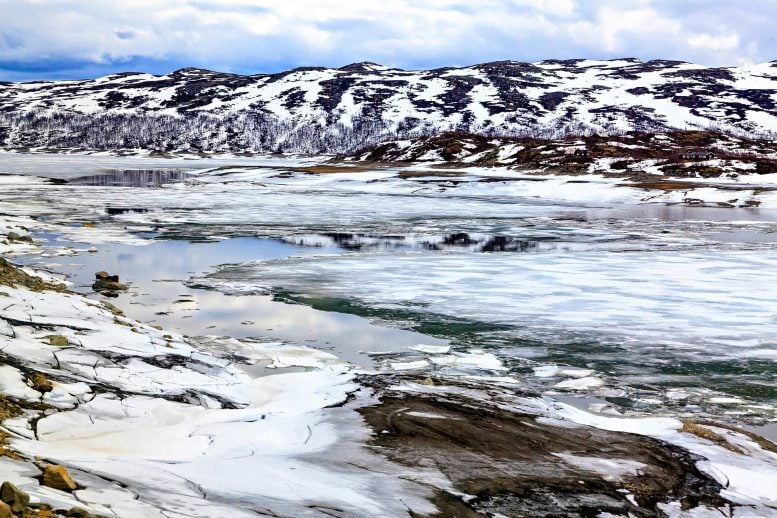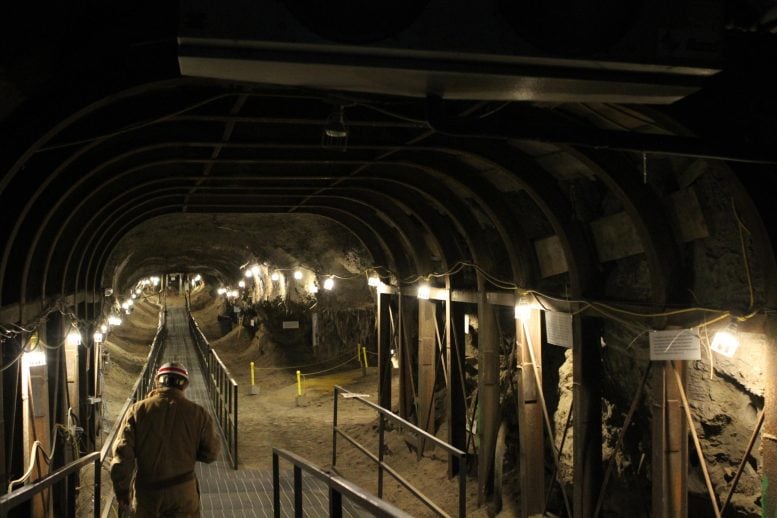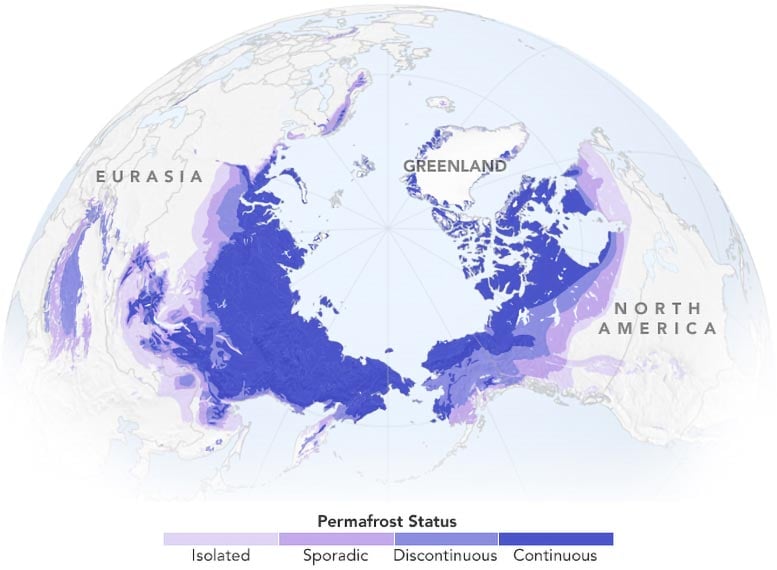

Scientists have discovered that the Arctic’s vast permafrost areas are now releasing more greenhouse gases than they absorb, contributing to global warming.
Over a two-decade study, regions like forests absorbed carbon dioxide, which was offset by emissions from lakes, rivers, and wildfires. Additionally, methane, a potent short-lived gas, was significantly emitted from wetlands.
Permafrost and Climate Impact
A new study in Global Biogeochemical Cycles, co-authored by NASA scientists, reveals how and where greenhouse gases are escaping from the vast northern permafrost region as Arctic temperatures rise. These frozen soils, spanning from Alaska to Canada and Siberia, hold twice the amount of carbon currently in the atmosphere—hundreds of billions of tons—much of it buried for centuries.

An international team, led by researchers from Stockholm University, found that between 2000 and 2020, the Arctic’s carbon dioxide absorption was nearly balanced out by emissions from the land. Ultimately, they concluded that this region has become a net source of greenhouse gases, largely due to methane. Although methane is shorter-lived than carbon dioxide, it traps much more heat per molecule, making it a significant contributor to recent global warming trends.
The findings reveal a landscape in flux, said Abhishek Chatterjee, a co-author and scientist at NASA’s Jet Propulsion Laboratory in Southern California. “We know that the permafrost region has captured and stored carbon for tens of thousands of years,” he said. “But what we are finding now is that climate-driven changes are tipping the balance toward permafrost being a net source of greenhouse gas emissions.”
Greenhouse gases shroud the globe in this animation showing data from 2021. Carbon dioxide is shown in orange; methane is shown in purple. Methane traps heat 28 times more effectively than carbon dioxide over a 100-year timescale. Wetlands are a significant source of such emissions. Credit: NASA’s Scientific Visualization Studio
Carbon Stockpile
Permafrost is ground that has been permanently frozen for anywhere from two years to hundreds of thousands of years. A core of it reveals thick layers of icy soils enriched with dead plant and animal matter that can be dated using radiocarbon and other techniques. When permafrost thaws and decomposes, microbes feed on this organic carbon, releasing some of it as greenhouse gases.
Unlocking a fraction of the carbon stored in permafrost could further fuel climate change. Temperatures in the Arctic are already warming two to four times faster than the global average, and scientists are learning how thawing permafrost is shifting the region from being a net sink for greenhouse gases to becoming a net source of warming.

They’ve tracked emissions using ground-based instruments, aircraft, and satellites. One such campaign, NASA’s Arctic-Boreal Vulnerability Experiment (ABoVE), is focused on Alaska and western Canada. Yet locating and measuring emissions across the far northern fringes of Earth remains challenging. One obstacle is the vast scale and diversity of the environment, composed of evergreen forests, sprawling tundra, and waterways.
Cracks in the Sink
The new study was undertaken as part of the Global Carbon Project’s RECCAP-2 effort, which brings together different science teams, tools, and datasets to assess regional carbon balances every few years. The authors followed the trail of three greenhouse gases — carbon dioxide, methane, and nitrous oxide — across 7 million square miles (18 million square kilometers) of permafrost terrain from 2000 to 2020.
Researchers found the region, especially the forests, took up a fraction more carbon dioxide than it released. This uptake was largely offset by carbon dioxide emitted from lakes and rivers, as well as from fires that burned both forest and tundra.
They also found that the region’s lakes and wetlands were strong sources of methane during those two decades. Their waterlogged soils are low in oxygen while containing large volumes of dead vegetation and animal matter — ripe conditions for hungry microbes. Compared to carbon dioxide, methane can drive significant climate warming in short timescales before breaking down relatively quickly. Methane’s lifespan in the atmosphere is about 10 years, whereas carbon dioxide can last hundreds of years.
The findings suggest the net change in greenhouse gases helped warm the planet over the 20-year period. But over a 100-year period, emissions and absorptions would mostly cancel each other out. In other words, the region teeters from carbon source to weak sink. The authors noted that events such as extreme wildfires and heat waves are major sources of uncertainty when projecting into the future.
Research Integration and Comprehensive Findings
The scientists used two main strategies to tally greenhouse gas emissions from the region. “Bottom-up” methods estimate emissions from ground- and air-based measurements and ecosystem models. Top-down methods use atmospheric measurements taken directly from satellite sensors, including those on NASA’s Orbiting Carbon Observatory-2 (OCO-2) and JAXA’s (Japan Aerospace Exploration Agency) Greenhouse Gases Observing Satellite.
Regarding near-term, 20-year, global warming potential, both scientific approaches aligned on the big picture but differed in magnitude: The bottom-up calculations indicated significantly more warming.
“This study is one of the first where we are able to integrate different methods and datasets to put together this very comprehensive greenhouse gas budget into one report,” Chatterjee said. “It reveals a very complex picture.”
Reference: “Permafrost Region Greenhouse Gas Budgets Suggest a Weak CO2 Sink and CH4 and N2O Sources, But Magnitudes Differ Between Top-Down and Bottom-Up Methods” by G. Hugelius, J. Ramage, E. Burke, A. Chatterjee, T. L. Smallman, T. Aalto, A. Bastos, C. Biasi, J. G. Canadell, N. Chandra, F. Chevallier, P. Ciais, J. Chang, L. Feng, M. W. Jones, T. Kleinen, M. Kuhn, R. Lauerwald, J. Liu, E. López-Blanco, I. T. Luijkx, M. E. Marushchak, S. M. Natali, Y. Niwa, D. Olefeldt, P. I. Palmer, P. K. Patra, W. Peters, S. Potter, B. Poulter, B. M. Rogers, W. J. Riley, M. Saunois, E. A. G. Schuur, R. L. Thompson, C. Treat, A. Tsuruta, M. R. Turetsky, A.-M. Virkkala, C. Voigt, J. Watts, Q. Zhu and B. Zheng, 26 October 2024, Global Biogeochemical Cycles.
DOI: 10.1029/2023GB007969

